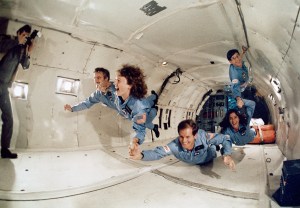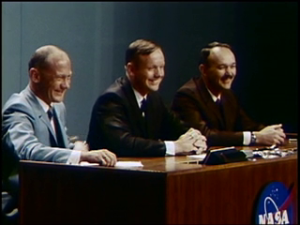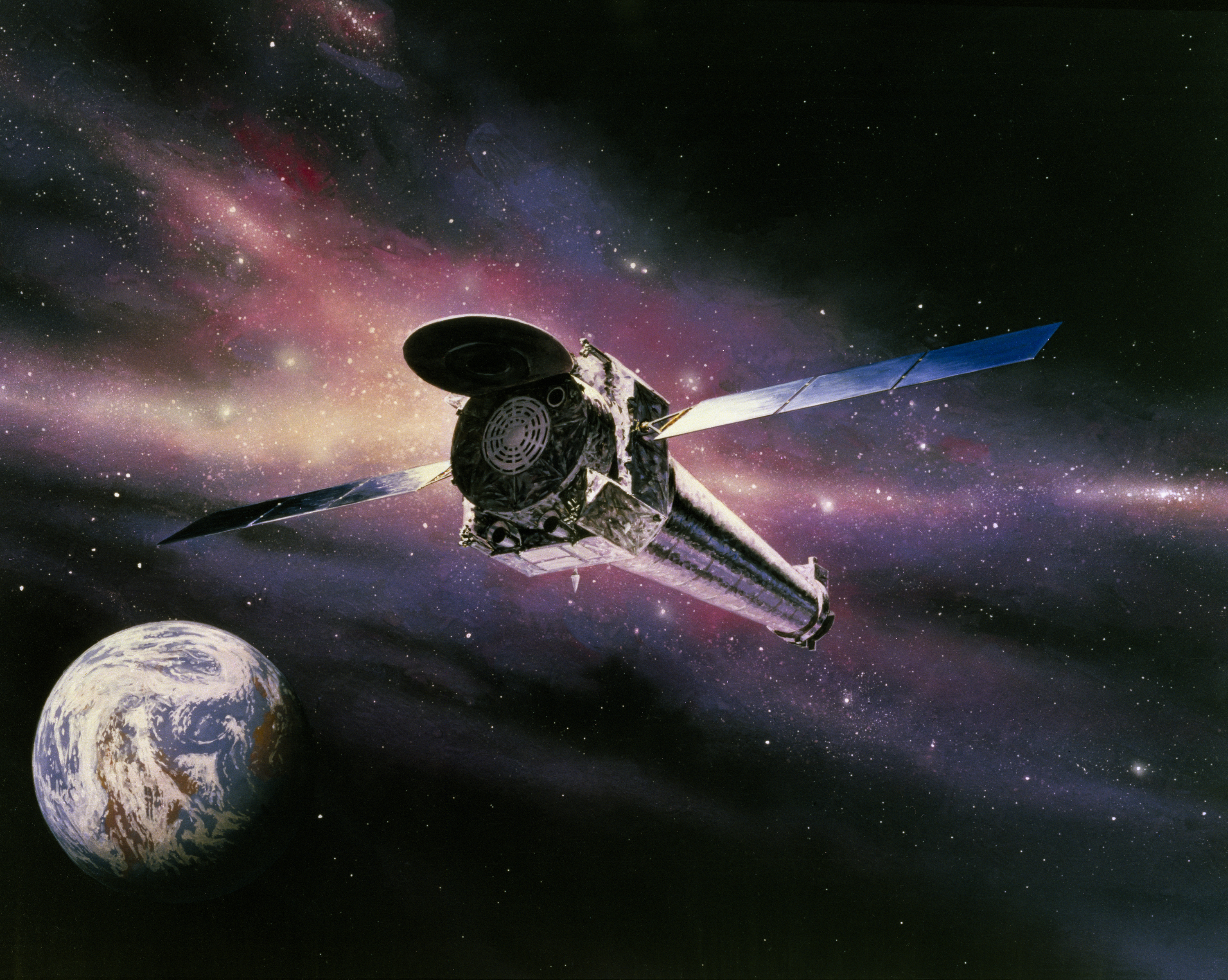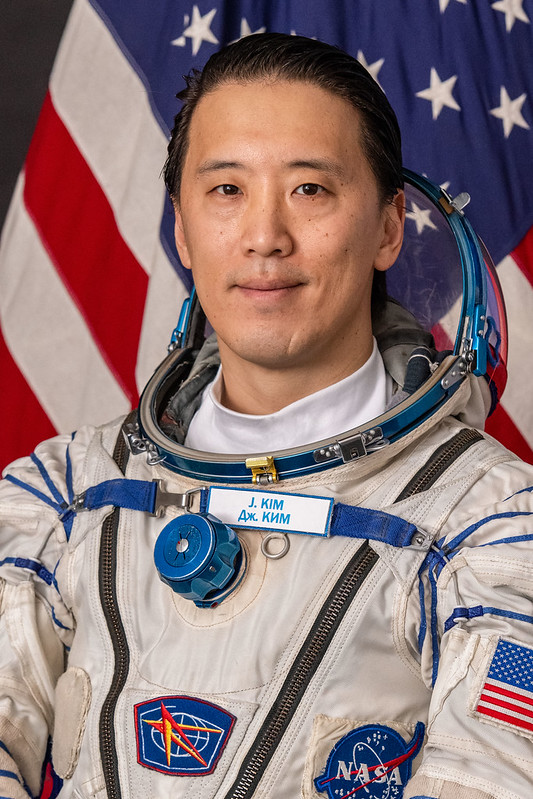235 Years Ago: Herschel Discovers Saturn’s Moon Enceladus
On Aug. 29, 1789, German-born British astronomer William Herschel observed a tiny bright dot orbiting around Saturn. His son later named the object Enceladus. Because of its distance from Earth and proximity to bright Saturn, for the next two centuries little remained known about Enceladus other than its size, orbital parameters, and that it held […]
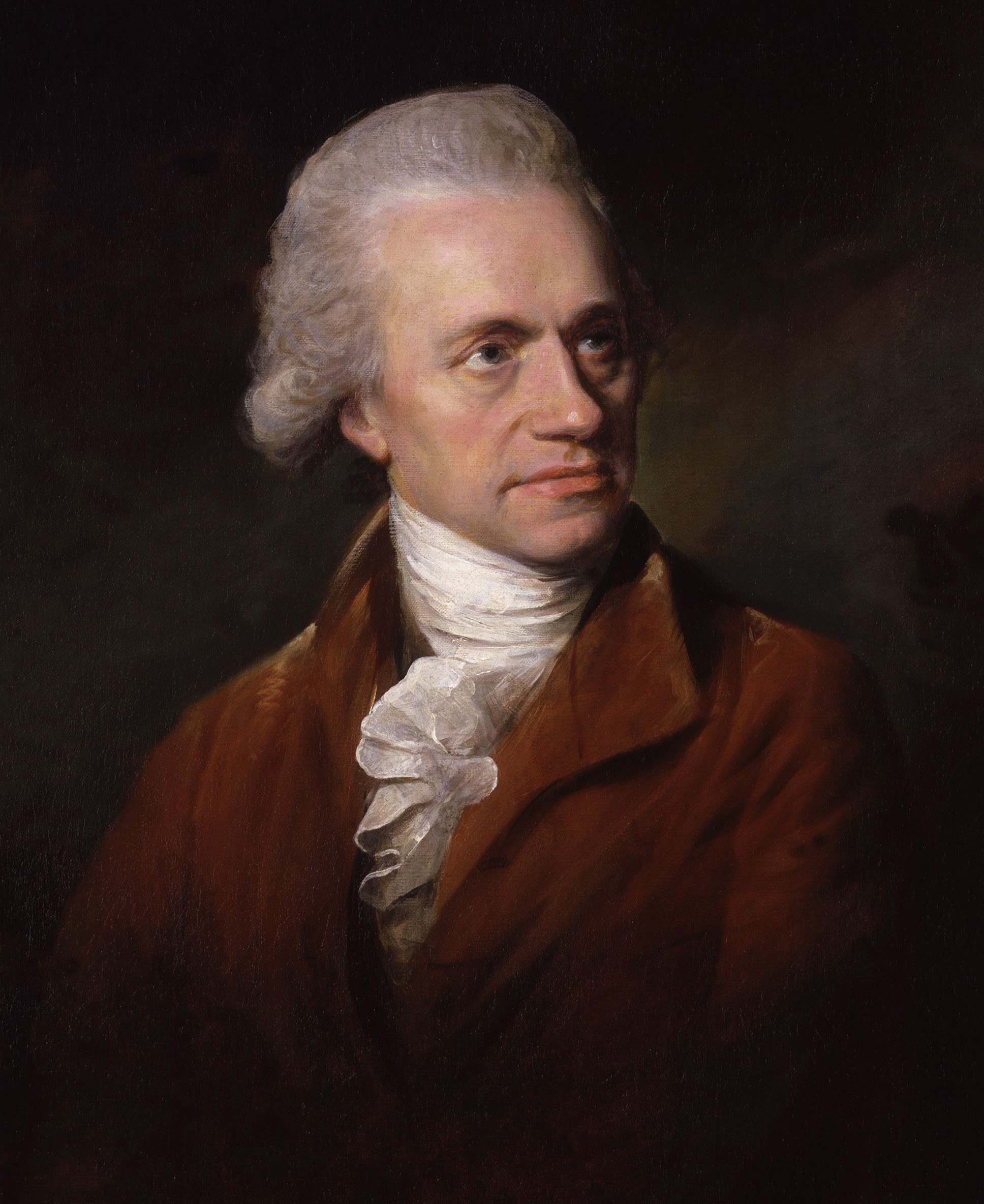
On Aug. 29, 1789, German-born British astronomer William Herschel observed a tiny bright dot orbiting around Saturn. His son later named the object Enceladus. Because of its distance from Earth and proximity to bright Saturn, for the next two centuries little remained known about Enceladus other than its size, orbital parameters, and that it held the honor as the most reflective body in the solar system. It took the Voyager flybys through the Saturn system in the early 1980s and especially the detailed observations between 2005 and 2015 by the Saturn orbiter Cassini to reveal Enceladus as a truly remarkable world, interacting with Saturn and its rings. Harboring a subsurface ocean of salty water, Enceladus may possibly be hospitable to some forms of life.

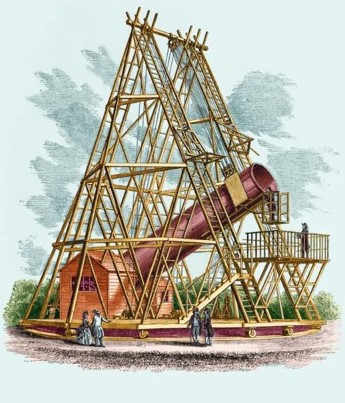
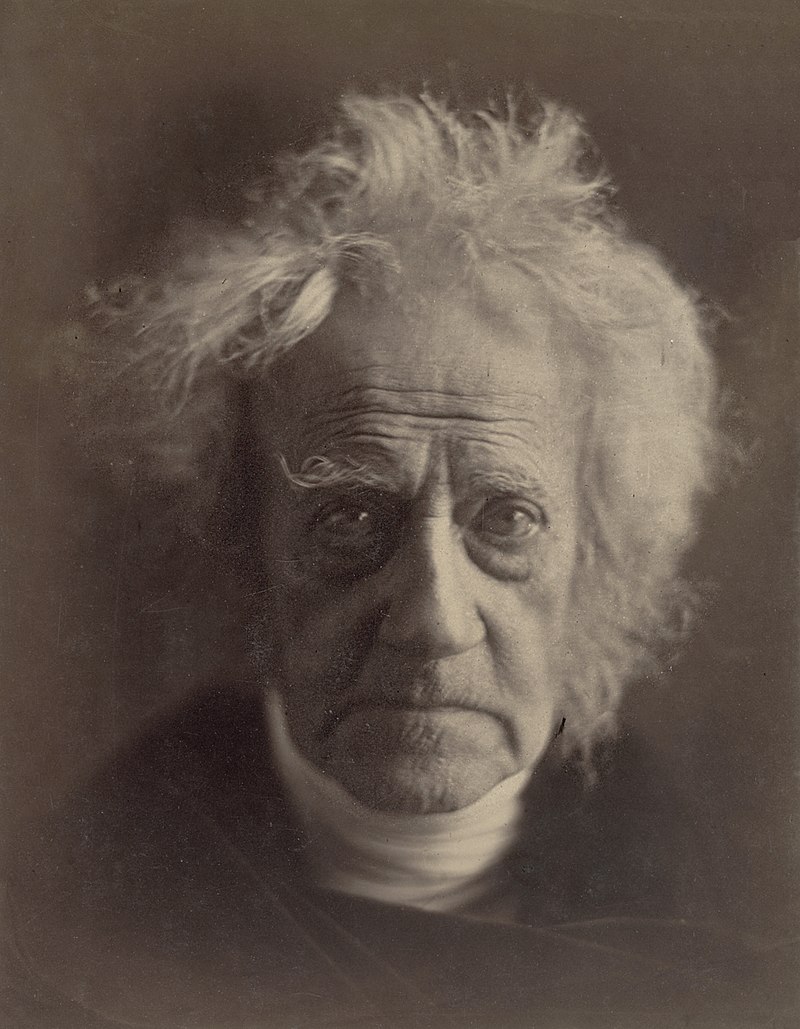
Left: Portrait (1785) of William Herschel by Lemuel Francis Abbott. Image credit: courtesy National Portrait Gallery, London. Middle: Drawing of Herschel’s 40-foot telescope. Right: Portrait (1867) of John Herschel by Julia Margaret Cameron. Image credit: Metropolitan Museum of Art.
Herschel’s previous astronomical accomplishments include the discovery of Uranus in 1781 and two of its moons, Oberon and Titania, in 1787. He also catalogued numerous objects he termed nebulae, but remained frustrated by the limitations of telescopes of his age. He began to build ever larger instruments, finally building the world’s largest reflecting telescope of its time. At 40 feet long, and with a 49-inch diameter primary mirror weighing a ton, it looked impressive although its optical characteristics did not advance the field as much as he had hoped. Nevertheless, Herschel used this telescope to observe Saturn and its five known moons, looking for others. On Aug. 28, 1789, he observed a bright point orbiting the planet and believed he had discovered a sixth moon. On Sept. 17, he discovered a seventh moon orbiting the ringed planet. He did not name these moons, that task fell to his son John who believed Saturn’s moons should be named after the Titans of Greek mythology. He named the first moon Enceladus and the second Mimas.

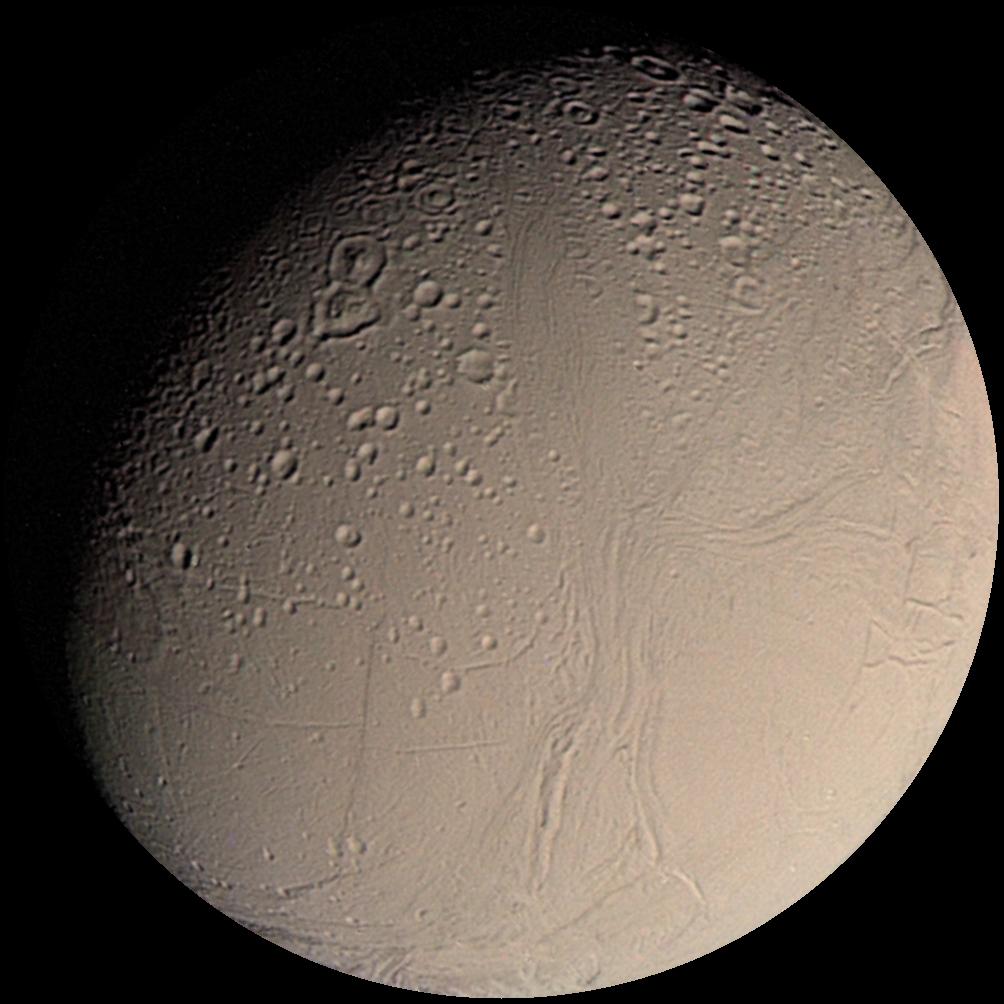
Left: Relative sizes of Earth, Earth’s Moon, and Enceladus. Right: Best Voyager 2 image of Enceladus.
For nearly two centuries, Enceladus remained not much more than a point of light orbiting Saturn, just another icy moon in the outer solar system. Astronomers estimated its diameter at around 310 miles and its orbital period around Saturn at 1.4 days, with a mean distance from the planet’s center of 148,000 miles. Enceladus has the distinction as one of the brightest objects in the solar system, reflecting almost 100 percent of the Sun’s light. Unusual telescope observations during the 20th century showed an increase in brightness on its trailing side, with no known explanation at the time. In 1966, astronomers discovered a diffuse ring around Saturn, the E-ring, and found in 1980 that its density peaked near Enceladus. The Voyager 1 spacecraft flew within 125,570 miles of Enceladus during its passage through the Saturn system on Nov. 12, 1980. Its twin Voyager 2 came within 54,000 miles on Aug. 26, 1981, during its flyby. These close encounters enabled the spacecraft to return the first detailed images of the moon, showing various terrains, including heavily cratered areas as well as smooth crater-free areas, indicating a very young surface.

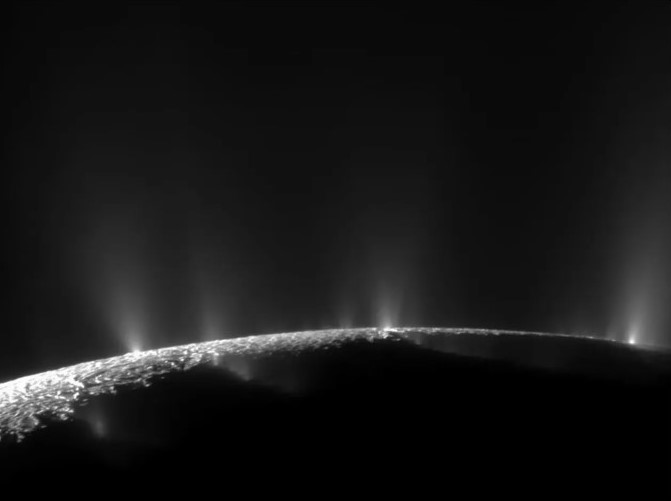
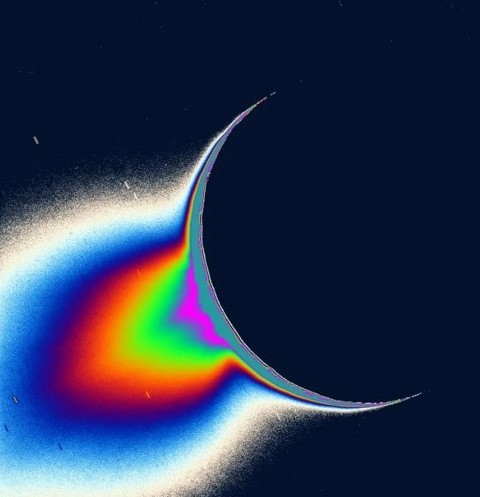
Left: False color image of Enceladus from Cassini showing the tiger stripes at bottom. Middle: Limb view of Enceladus showing plumes of material emanating from its surface. Right: Cassini image of Enceladus backlit by the Sun showing the fountain-like plumes of material.
After the Cassini spacecraft entered orbit around Saturn in July 2004, our understanding of Enceladus increased tremendously, and of course raised new questions. Between 2005 and 2015, Cassini encountered Enceladus 22 times, turning its various instruments on the moon to unravel its secrets. It noted early on that the moon emitted gas and dust or ice particles and that they interacted with the E-ring. Images of the moon’s south polar region revealed cracks on the surface and other instruments detected a huge cloud of water vapor over the area. The moon likely had a liquid subsurface and some of this material reached the outside through these cracks. Scientists named the most prominent of these areas “tiger stripes” and later observations confirmed them as the source of the most prominent jets. During the most daring encounter in October 2015, Cassini came within 30 miles of the Enceladus’ surface, flying through the plume of material emanating from the moon. Analysis of the plumes revealed an organic brew of volatile gases, water vapor, ammonia, sodium salts, carbon dioxide, and carbon monoxide. These plumes replenish Saturn’s E-ring, and some of this material enters Saturn’s upper atmosphere, an interaction unique in the solar system. More recently, the James Webb Space Telescope imaged the water vapor plume emanating from Enceladus’ south pole, extending out 40 times the size of the moon itself. The confirmation of a subsurface ocean of salty water has led some scientists to postulate that Enceladus may be hospitable to some forms of life, making it a potential target for future exploration. Enceladus may yet have more surprises, even as scientists continue to pore over the data returned by Cassini.
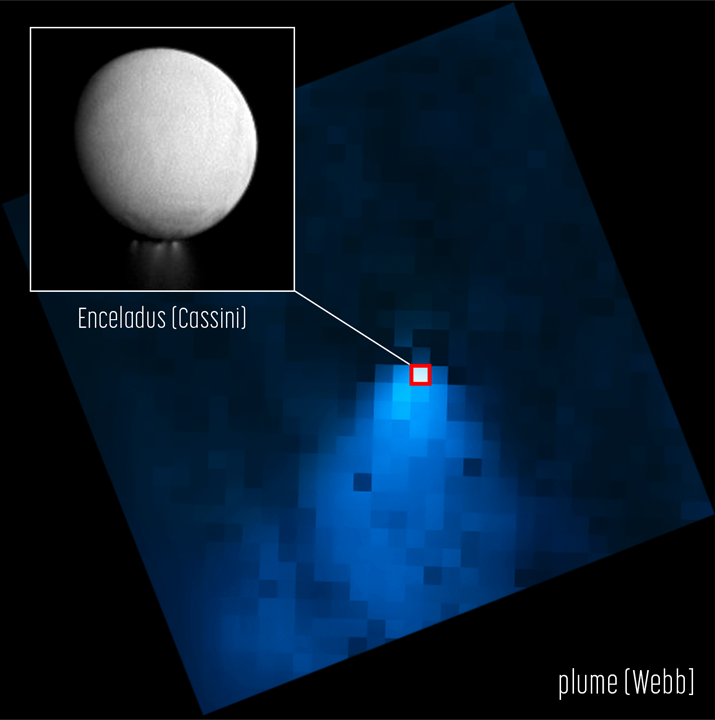
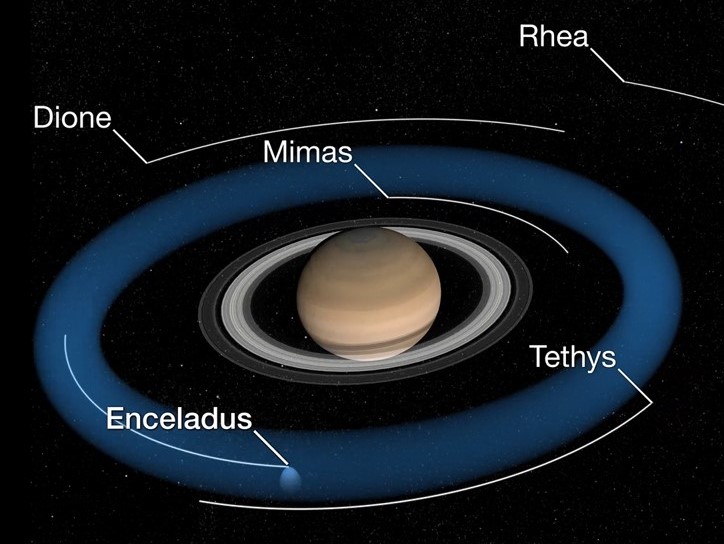
Left: James Webb Space Telescope image of a water vapor plume emanating from Enceladus. Right: Illustration of the interaction of Enceladus and Saturn’s E-ring.
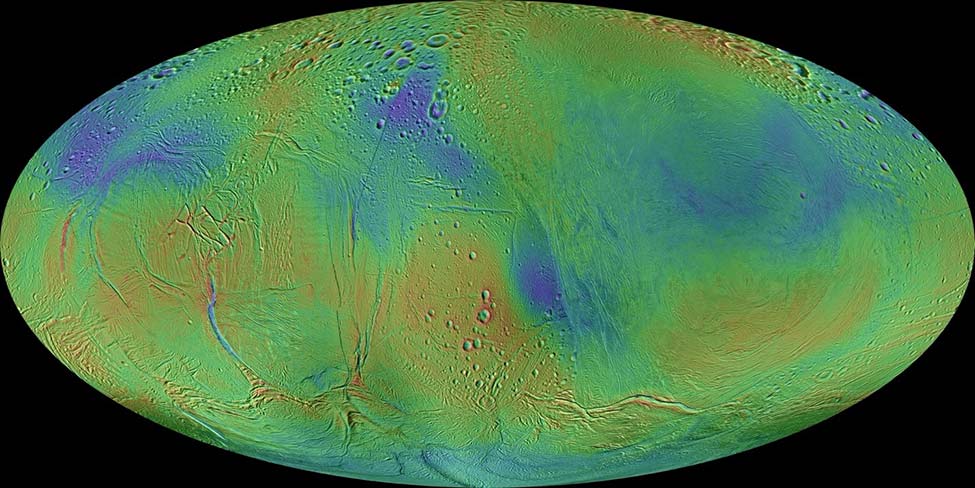
Map of Enceladus based on imagery from Cassini, turning our view of Enceladus from a small point of light into a unique world with its own topography.
Events in world history in 1789:
January 29 – Vietnamese emperor Quang Trung defeats Chinese Qing forces at Ngọc Hồi-Đống Đa in one of the greatest military victories in Vietnamese history.
March 10 – In Japan, the Menashi-Kunashir rebellion begins between the Ainu people and the Japanese.
April 7 – Selim III succeeds Abdul Hamid I as Sultan of the Ottoman Empire.
April 28 – Aboard the HMS Bounty in the Pacific Ocean, Fletcher Christian leads the mutiny against Captain William Bligh.
April 30 – Inauguration of George Washington as the first President of the United States of America.
July 14 – Citizens storm The Bastille fortress in Paris during the French Revolution.
September 15 – Birth of American writer James Fenimore Cooper in Burlington, New Jersey.
December 11 – Founding of the University of North Carolina, the oldest public university in the United States.
What's Your Reaction?



















.jpg?#)
























